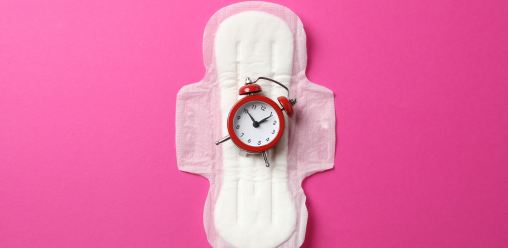Healthy New Jersey
Pads
Key facts about pads
- Change your pad every 4-6 hours.
- Pads are great for overnight protection.
- There are different types of pads for different situations.
- Never flush a pad down the toilet.
Pads are absorbent units that are attached to your underwear and provide external protection. Available in a variety of absorbencies for light or heavy periods, there are also overnight pads for extra protection while you sleep or even during the day.

Reusable pads
Reusable menstrual pads are eco-friendly alternatives to disposable pads. Made from soft fabrics like organic cotton or bamboo, they are washable and reusable, reducing waste. With various sizes and absorbencies, they offer comfort and can be secured in place. They provide cost-effective and sustainable menstrual care.

Ultra-thin pads
Ultra-thin pads are thinner and less bulky compared to regular maxi-pads, but they have the same moisture-absorbing power. Like regular maxi-pads, ultra-thin pads are available in various sizes and people find them more comfortable to wear than regular maxis.

Maxi-pads
Maxi-pads are a reliable choice that provides solid protection without any fancy extras. They have a noticeable thickness and visible layers of cotton that give a reassuring feeling. These pads offer the highest level of absorption for those who require it.

Overnight pads
Overnight pads are designed to provide protection during the night. Overnight pads are typically more absorbent to help prevent leakages. Accidents can sometimes happen.
Pad hygiene and disposal
Choose the right pad for you
Select a menstrual pad that suits your flow and comfort preferences. Ensure that the pad is made of safe materials and does not cause irritation.
Change regularly
To maintain cleanliness and prevent odors, change your pad often or according to your flow. It is generally recommended to change pads every 4 to 6 hours, however a heavier flow may require a more frequent change.
Wash your hands
Wash your hands thoroughly with soap and water before and after changing your pad to minimize the risk of infection.
Proper removal
When removing the used pad, gently peel it off from your underwear. Fold the pad in half with the adhesive side on the outside to keep the soiled part contained.
Disposal options
- Trash: The most common and convenient method of disposal is to wrap the used pad securely in its wrapper or toilet paper and place it in a trash bin. Choose a bin with a lid to minimize odor and ensure proper containment.
- Special disposal bags: Some brands offer special disposal bags designed for sanitary products. You can use these bags to seal the used pad before discarding it in a trash bin.
- Personal hygiene products: Some pads come with built-in disposal flaps or wrappers that allow you to seal the used pad before disposal. These products provide a discreet and hygienic way to dispose of pads.
Avoid flushing
Avoid flushing menstrual pads down the toilet, as they can clog the plumbing system and cause damage to sewage systems.
Odor control
To control odors, you can use scented disposal bags or sprinkle a small amount of baking soda in the trash bin.
Remember:
- Pads should not be flushed down the toilet.
- They should be changed often or according to your flow.
- There are a variety of pad options.
 Official Site of The State of New Jersey
Official Site of The State of New Jersey